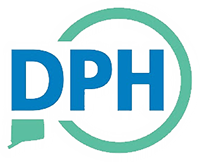FOR IMMEDIATE RELEASE: Aug. 3, 2024
CONTACT: Chris Boyle, Director of Communications
(860) 706-9654 – christopher.boyle@ct.gov
HARTFORD, Conn.— Following Saturday’s strong thunderstorms, the Connecticut Department of Public Health wants to remind the public of the dangers of carbon monoxide poisoning from improper use of fuel burning equipment during power outages. Connecticut residents are being reminded that portable generators and indoor use of grills can lead to carbon monoxide poisoning.
“The tragic reality is that most of these carbon monoxide poisonings and deaths are completely preventable,” said DPH Commissioner Manisha Juthani, MD. “It is very important to learn how carbon monoxide gas can harm you and what you can do to keep your loved ones safe from carbon monoxide poisoning.”
Carbon monoxide is an invisible odorless gas that can be fatal. It forms when fuels like gasoline, natural gas, propane, wood, charcoal, and kerosene do not burn completely. Breathing carbon monoxide can deprive the body of oxygen, and may lead to illness, unconsciousness and death.
Symptoms of Carbon Monoxide Poisoning
- Headache, fatigue, dizziness, confusion, nausea or vomiting, and loss of consciousness.
- If several members of a household experience these symptoms when they are home but feel better when they are away from the home, there may be a carbon monoxide problem.
What Should I Do If I Have Symptoms?
- Get out of the house immediately and seek medical help if you or a family member or guest has unexplained/sudden onset of symptoms of carbon monoxide poisoning.
- Call 911 from a cell phone or neighbor’s home and the Connecticut Poison Control Center at 1-800-222-1222.
How Do I Know?
Carbon monoxide alarms are the only way to know if the deadly gas is present in your home. DPH recommends that all residents with fuel burning appliances or indoor equipment install carbon monoxide alarms near all sleeping areas in their home to alert them of the presence of carbon monoxide. Install a carbon monoxide alarm on each floor of your home and outside of each bedroom. Install new batteries as per manufacturer’s instructions and replace alarms every five years, as the sensors degrade.
How can I stay safe?
- Never use portable generators, charcoal or gas grills, gas or propane powered pressure washers, saws or other fuel powered equipment inside your home, garage, carport, basement or other enclosed spaces. Opening windows and doors, and operating fans is not enough to prevent buildup of carbon monoxide in a home.
- Install a carbon monoxide alarm on each floor of your home & outside of each bedroom.
- Make sure the exhaust pipe on your standby generator is pointing away from the house.
- Place portable generators at least 20 feet from the house.
- Have your heating systems, chimney flues, gas appliances, wood stoves, and generators checked every year, and cleaned and serviced as needed by qualified heating/appliance contractors.
For more info, contact your local health department or go to www.ct.gov/dph/co.
Additional resources:
Connecticut DPH Environmental & Occupational Health Assessment Program
www.ct.gov/dph/co 860-509-7740
Connecticut Poison Control Center
http://poisoncontrol.uchc.edu 800-222-1222
Consumer Product Safety Commission
(Important info about portable generators)
-30-


